Hair Loss In Women: Symptoms, Causes, Types, And Diagnosis
Your guide to navigating the journey of hair loss, redefining confidence and hair wellness.
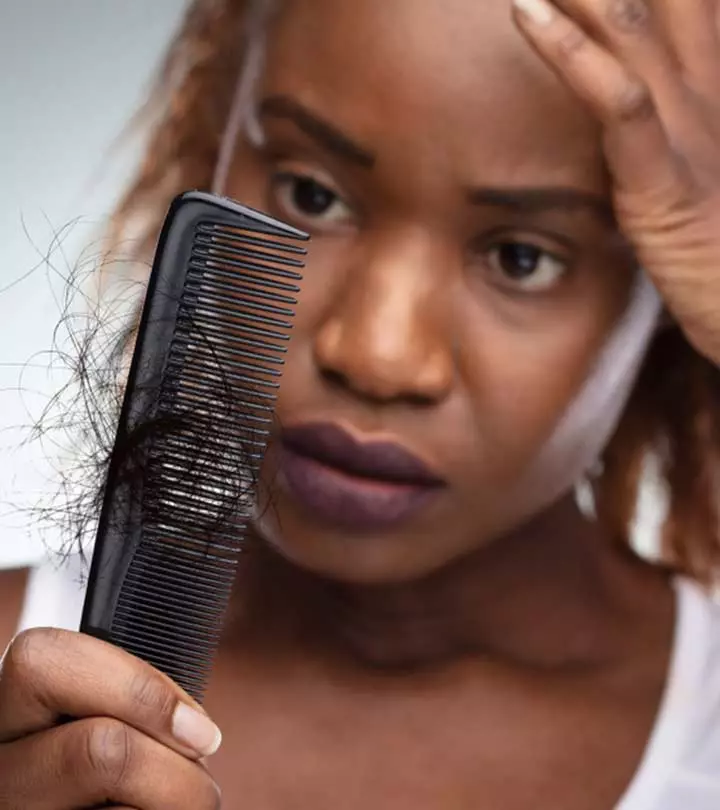
Image: Shutterstock
Hair loss is a problem that every woman faces these days. Various reasons lead to hair loss in women. Lifestyle, food, pollution, environmental stress, and others can lead to hair fall. Underlying health conditions can also lead to hair loss.
To treat hair loss, one has to know the cause of it. It helps in finding a suitable treatment for hair loss. In this article, we try to understand the most common reasons behind hair loss in women. Continue reading to know more.
In This Article
Hair Loss In Women: How Common Is It?
Hair loss is a common issue in women. Research shows that nearly 12% of women in their 20s to 50% of women over their 80s usually deal with androgenic alopecia (1). Postpartum hair loss occurs a few weeks after delivering the baby. Emotional distress causes the most severe type of hair loss in women.
Experiencing premature baldness is a prevalent concern among numerous women. In a poll of 32,601 American adults, participants from distinct age groups revealed their feelings about it. 18- to 24-year-old was the most apprehensive group, with 57% expressing that the possibility of going prematurely bald terrifies them. 55% of respondents in the 25- to 34-year-old age group and 51% in the 35- to 44-year-old age group shared similar concerns.
To better understand how hair loss occurs, we need to look at the hair growth cycle.
The Hair Growth Cycle
The hair growth cycle has three phases – anagen, catagen, and telogen. Anagen is the growth phase, catagen is the regression phase, and telogen is the resting phase. In the anagen phase, the hair follicles stimulate full hair shaft growth from the root to the tip. In the catagen and telogen phases, the follicles reset and prepare to form new hair shafts, allowing the old hair to fall out.

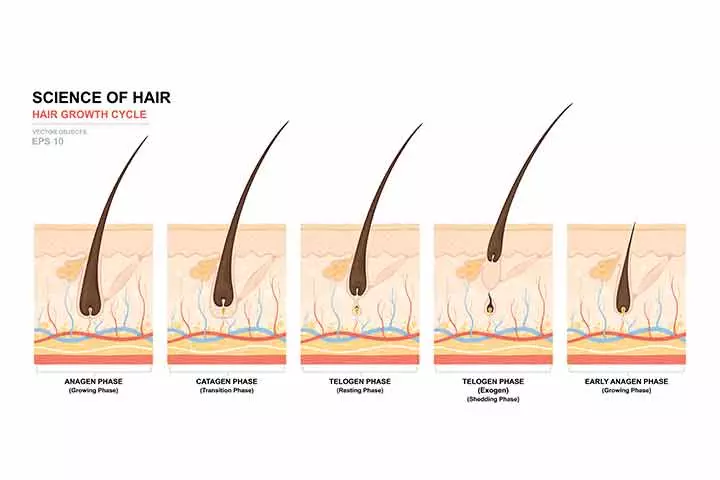
- Phase 1: Anagen
The hair grows out from the follicles. The shaft is continuously constructed to increase your hair length. Anagen can last for 2 to 6 years.
- Phase 2: Catagen
Your hair prepares to go into resting. Catagen can last for about 2 weeks.
- Phase 3: Telogen
The hair stops growing and eventually falls out to let new hair replace it. Telogen lasts for about 5 to 6 weeks.
Hair loss occurs when your hair falls out without completing this three-stage cycle.
A couple of other phases in this cycle are neogen and exogen. Neogen is the regeneration stage of a hair follicle, where a new follicle grows in the place of an old one. Exogen is the releasing of the old anagen.
The hair growth cycle tells us that it is normal to lose about 100 strands a day. However, heavier hair fall could be caused by various factors. Hair loss can happen in women in different forms. We will look at them below.
Types Of Hair Loss In Women
- Postpartum Hair Loss: Postpartum hair loss occurs a few weeks after childbirth. It occurs due to low hormone levels. During pregnancy, there is an increase in progesterone and estrogen levels. This increase puts hair in a prolonged anagen phase (2), (3). These levels return to normal after the removal of the placenta, causing hair loss. Postpartum hair loss can also be caused due to nutrient deficiencies, post-surgery stress, and hypothyroidism (2), (4).
- Stress-Related Hair Loss: Stress affects the hair follicle development and can impact the hair growth cycle (5). Stress-related hair loss, when left untreated, can lead to serious hair disorders like alopecia, telogen effluvium, and baldness (5).
- Drug-Induced Hair Loss: Hair loss can also be caused by drug intake. Certain drugs can induce either anagen or telogen effluvium (6). These can lead to patterned or diffused hair loss and can be acute or chronic.
- Anagen Effluvium: Anagen effluvium occurs a few days or weeks after taking the drug.
- Telogen Effluvium: Telogen effluvium occurs typically two to four months after you start taking the drug.
- Alopecia Areata: Alopecia is an autoimmune condition that results in patchy hair loss on the scalp and other parts of the body, including eyebrows, eyelashes, and the face (7). It causes your hair to fall out in patches and may lead to complete scalp hair loss or full-body hair loss. Two types of alopecia affect women the most.
- Androgenic Alopecia: Hair loss occurs in patterns. Female pattern hair loss is one such type.
- Alopecia Areata: Hair loss occurs in patches.
- Trichotillomania: A compulsive disorder where the patient pulls out their own hair (8). The constant pulling of hair can lead to severe hair loss.
- Diffuse Thinning: Hair begins thinning all over the scalp.
- Nutrient Deficiencies: Deficiencies in vitamins and minerals, including iron, vitamin D, selenium, and calcium, can lead to hair loss (9).
 Trivia
TriviaJust as there are different types of hair loss, their causes can also vary greatly. In the following section, we will explore the causes of hair loss in women in detail.
Causes Of Hair Loss In Women
1. Hereditary Factors
You will likely have a hair loss problem if your parents do. Alopecia is normally caused due to genetics. While this is more evident in men, women too are likely to develop genetically inherited alopecia.
2. Hormonal Changes
Hormonal changes in the body increase the sensitivity of hair follicles, weaken the hair roots, and cause excess hair fall. Issues like menopause, ovarian cysts, hypothyroidism, and hyperthyroidism change the body’s hormonal balance and may lead to hair loss.
3. Pregnancy
During and after pregnancy, most women experience frequent dehydration, fatigue, and hormonal imbalances. These issues increase sensitivity in the hair follicles and create unfavorable scalp conditions, leading to chronic hair loss.
4. Physical And Mental Stress
Drastic and excessive weight loss, persistent illness, and excessive physical labor may exhaust and dehydrate the body. This can cause the hair follicles to become malnourished and weak, leading to hair loss.
5. Scalp Infections
Fungal, bacterial, and viral infections like seborrheic dermatitis and psoriasis on the scalp can weaken hair roots and damage hair follicles. These infections can eventually lead to hair thinning and breakage.
6. Autoimmune Disorders
Autoimmune disorders like alopecia areata are characterized by hair loss that happens when the immune system attacks the hair follicles (10). While there are treatments to reduce this type of hair loss, there is no definite cure.
7. Medication And Treatments
Certain medical conditions call for treatments and surgeries that may cure the ailment, but cause hair loss as a side effect. Treatments like chemotherapy, steroids, typhoid medications, heart disease, depression, and conditions like thyroid issues may cause extreme hair fall.
Alopecia was found to be one of the common adverse effects of Voriconazole, an antifungal medicine (11).
Other drugs that may cause hair loss as a side effect include (12), (13), (14):
- Acne medications containing vitamin A (retinoids)
- Antibiotics and antifungal drugs
- Antidepressants
- Birth control pills
- Anti-clotting drugs
- Cholesterol-lowering drugs
- Drugs that suppress the immune system
- Drugs that treat breast cancer and other cancers
- Epilepsy drugs (anticonvulsants)
- High blood pressure medications (anti-hypertensives), such as beta-blockers, ACE inhibitors, and diuretics
- Hormone replacement therapy
- Mood stabilizers
- Nonsteroidal anti-inflammatory drugs (NSAIDs)
- Drugs for treating Parkinson’s disease
- Steroids
- Thyroid medications
- Weight loss drugs
8. Thyroid Disorders
Thyroid disorders and anti-thyroid medication almost always lead to hair loss. The hair looks sparse, and the hair loss is evenly distributed all over the scalp. Successful treatment often can cause the hair to grow back.
9. Over processing And Styling
Going overboard with chemical hair treatments and hot styling tools can lead to hair fall. Heavy usage of hair products and hair accessories can lead to hair loss. Some hair products, like those containing sulfates, may harm your scalp in the long run. Hair accessories (like elastic bands) are known to pull on the hair. These can cause your hair to fall out. Hairstyles that require the hair to be pulled tight (like tight braids or ponytails) can also cause hair fall.
10. Decrease In Serum Ferritin, Anemia, And Blood Loss
of red blood cells in the body, sudden blood loss, and reduced serum ferritin levels in the body can also cause hair loss.
11. Crash Diets And Malnutrition
Insufficient nutrient intake
or being on a crash diet can cause malnourishment, leading to excessive hair fall. A lack of essential nutrients can affect both the structure and growth of hair. Micronutrients play a crucial role in the regular growth cycle of hair follicles, influencing the turnover rate of cells and keeping the hair cycle normal. So, consuming the right nutrients is crucial to keep your hair healthy (15). Antioxidants play a huge role in preventing hair loss by reducing inflammation, boosting immunity, and improving genetic expression linked to hair loss. Specific nutrients like unsaturated fatty acids, vitamin D3, zinc, copper, and arachidonic acid may help inhibit 5 alpha-reductase, regulate insulin resistance, promote immune function, prevent follicle regression, and support hair growth (16). Therefore, what you eat can influence both preventing and promoting hair loss. So avoid following crash diet fads and instead look for healthy diet plans.
12. Over-Supplementation
Over-supplementation of nutrients like vitamins A and E, and selenium, was found to cause hair loss (17). Consulting your doctor before going for any supplements is ideal. Also, it is better to get your nutrients first from organic foods.
These are the major causes of hair loss in women. While some of them can be reversed with dietary changes, some of them need a medical diagnosis. We have discussed the signs and symptoms you need to look for before visiting a doctor.
When To Consult A Doctor: Symptoms Or Signs To Look For
Consult a doctor if you experience any of the following symptoms:
- Hair loss in an unusual pattern
- Pain or itching along with hair loss
- Red, scaly, or abnormal-looking scalp
- Male pattern baldness (in women)
- Bald spots on the eyebrows
- Weight gain, muscle weakness, temperature sensitivity, or fatigue paired with the hair loss
- A scalp infection with hair loss
Diagnosis
The doctor will first check your hair density. They would then conduct a pull test to check the amount of hair that is shedding (the doctor may ask you not to wash your hair for a day or two). The hair is pulled at the ends to see how many hair strands fall out. You may have hair loss if more than 10% of the hair falls. The doctor may also conduct tests to check serum ferritin and Hb levels, thyroid function, vitamins B12 and D levels, and DHT. Lastly, a hair strand is checked under a microscope to determine the phase in which the hair loss occurs.
The Relationship Between Hair Loss And Menopause
Hair loss is common during menopause
(18). Period to menopause, the estrogen levels in women decrease and androgen concentrations increase. These changes lead to hair thinning near the front and sides of the hairline.
A change in sex hormone concentration during this time also contributes to hair loss. This change leads to the production of dihydrotestosterone originating from testosterone. It can influence the hair follicles and inhibit hair growth (18).
Women in their mid-forties are more likely to observe a reduction in their hair diameter and density (19).
 Pro Tip
Pro TipDealing with hair loss can be tough. Hair loss can be caused by various factors, including lifestyle, diet, pollution, underlying health issues, and environmental stress. Also, if your parents experience hair loss, you will most likely have it. Genetics is the most common cause of alopecia. But keep in mind that hair regrowth is often feasible with the correct measures and treatment alternatives. Consult a dermatologist or trichologist for a diagnosis and to understand what is causing your hair loss. Follow the prescribed treatment methods and a healthy lifestyle to cope with your condition and improve overall hair health.
Frequently Asked Questions
Is female hair loss reversible?
While some forms of hair loss are reversible, female pattern baldness is irreversible without treatment. You may have to continue long-term treatment to manage it.
At what age does women’s hair thin?
Women may start noticing hair thinning in their 40s or 50s.
Can taking estrogen help with hair loss?
The role of estrogen in hair loss is unclear. However, estrogen may have a protective effect against hair loss. Taking estrogen and oral contraceptives may also be effective (20). However, further research is required to conclude this theory.
Key Takeaways
- Hair loss happens when the hair shaft does not complete all the three phases of the hair growth cycle.
- Low hormone levels and post-delivery stress may also cause postpartum hair loss in women.
- Alopecia areata is another form of hair loss in women where the immune system attacks the hair follicles.
- Deficiencies of iron, calcium, vitamin D, and selenium can increase the rate of hair loss.
References
Articles on StyleCraze are backed by verified information from peer-reviewed and academic research papers, reputed organizations, research institutions, and medical associations to ensure accuracy and relevance. Read our editorial policy to learn more.
- Female Pattern Hair Loss: Current Treatment Concepts,
https://www.ncbi.nlm.nih.gov/pmc/articles/PMC2684510/ - The Postpartum Telogen Effluvium Fallacy,
https://www.ncbi.nlm.nih.gov/pmc/articles/PMC4908443/ - Effect Of Pregnancy On The Human Hair Cycle,
https://core.ac.uk/download/pdf/82326339.pdf - Diet And Hair Loss: Effects Of Nutrient Deficiency And Supplement Use,
https://www.ncbi.nlm.nih.gov/pmc/articles/PMC5315033/ - Stress And The Hair Follicle,
https://www.ncbi.nlm.nih.gov/pmc/articles/PMC1868107/ - Drug-Induced Diffuse Hair Loss In Females: An Observational Study,
http://www.astrocyte.in/article.asp?issn=2349-0977;year=2014;volume=1;issue=2;spage=80;epage=83;aulast=Garg - Alopecia: Introduction And Overview Of Herbal Treatment, https://www.researchgate.net/publication/307582836_Alopecia_introduction_and_overview_of_herbal_treatment
- Hair Loss In Women,
https://www.researchgate.net/publication/26807794_Hair_loss_in_women - The Role of Vitamins and Minerals in Hair Loss: A Review,
https://www.ncbi.nlm.nih.gov/pmc/articles/PMC6380979/ - Alopecia Areata,
https://www.ncbi.nlm.nih.gov/pmc/articles/PMC5573125/ - Alopecia And Nail Changes Associated With Voriconazole Therapy,
https://pubmed.ncbi.nlm.nih.gov/24855150/ - Telogen Effluvium: A Review,
https://www.ncbi.nlm.nih.gov/pmc/articles/PMC4606321/ - Drug-Induced Alopecia: Review Of The Literature,
https://pubmed.ncbi.nlm.nih.gov/7631289/ - Drug-Induced Hair Loss And Hair Growth. Incidence, Management And Avoidance,
https://pubmed.ncbi.nlm.nih.gov/8018303/ - The Role of Vitamins and Minerals in Hair Loss: A Review
https://pubmed.ncbi.nlm.nih.gov/30547302/ - Influence of Nutrition, Food Supplements and Lifestyle in Hair Disorders
https://www.ncbi.nlm.nih.gov/pmc/articles/PMC9650738/ - The Diagnosis And Treatment Of Iron Deficiency And Its Potential Relationship To Hair Loss,
https://pubmed.ncbi.nlm.nih.gov/16635664/ - Nutrition Of Women With Hair Loss Problem During The Period Of Menopause,
https://www.ncbi.nlm.nih.gov/pmc/articles/PMC4828511/ - Hormonal Changes In Menopause: Do They Contribute To A ‘midlife Hair Crisis’ In Women?,
https://onlinelibrary.wiley.com/doi/abs/10.1111/j.1365-2133.2011.10629.x - Hormonal therapy in female pattern hair loss
https://www.ncbi.nlm.nih.gov/pmc/articles/PMC5419033/
Read full bio of Dr. Shruti Chavan
Read full bio of Anjali Sayee
Read full bio of Eshna Das
Read full bio of Monomita Chakraborty





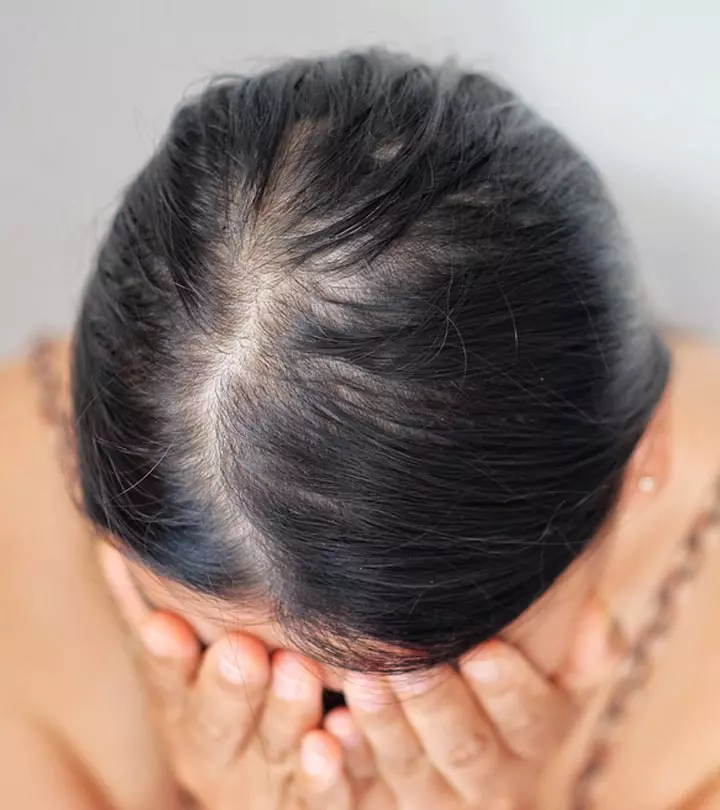

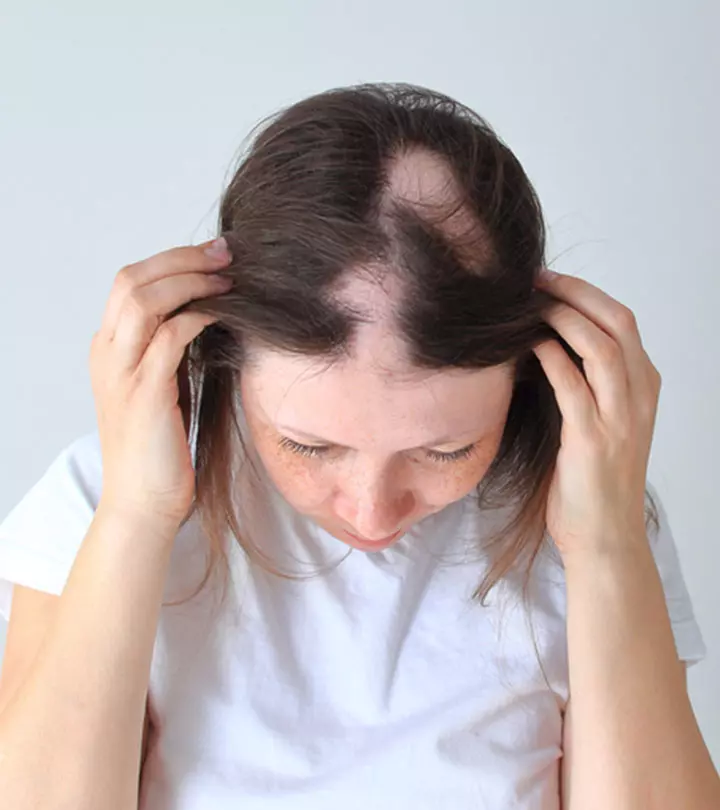
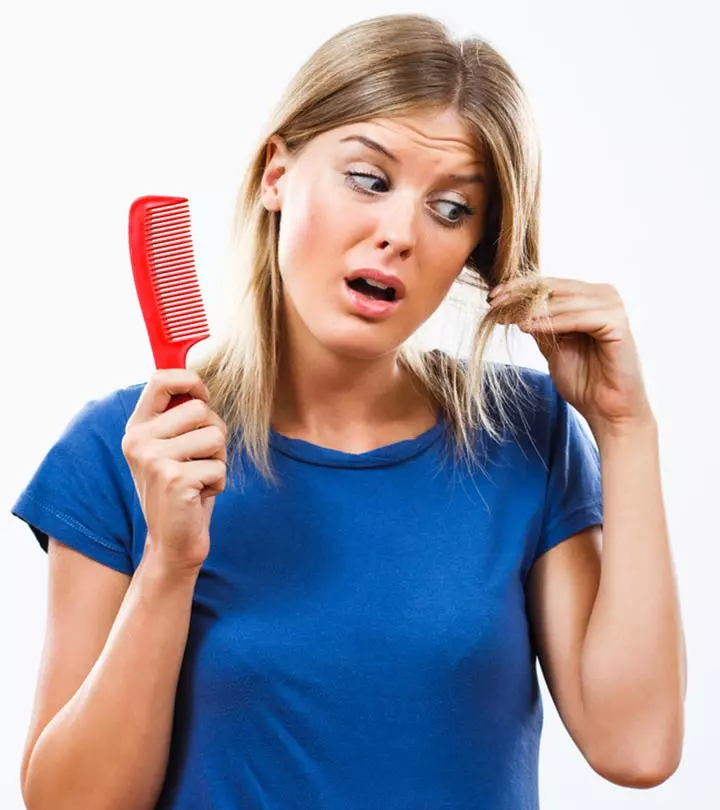
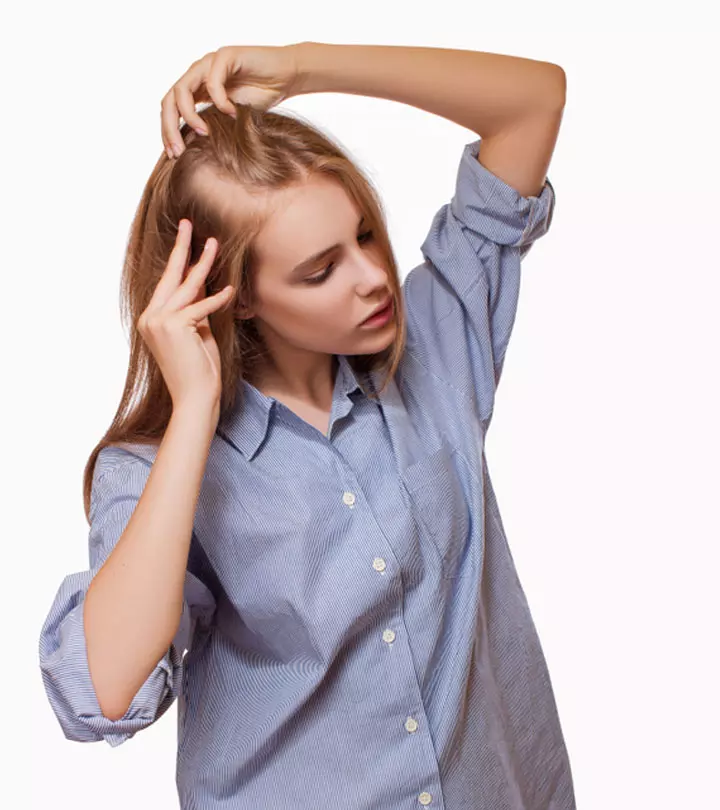

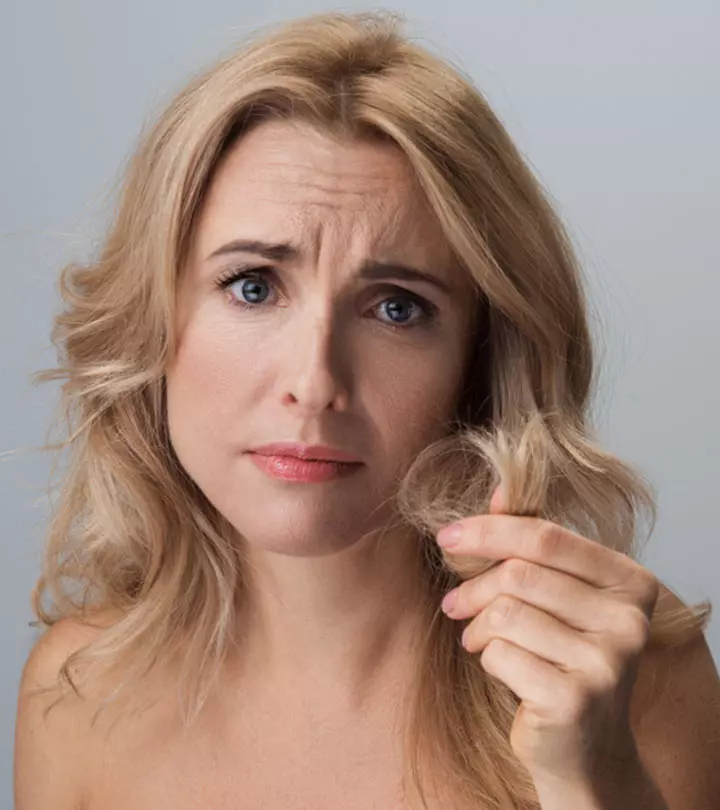
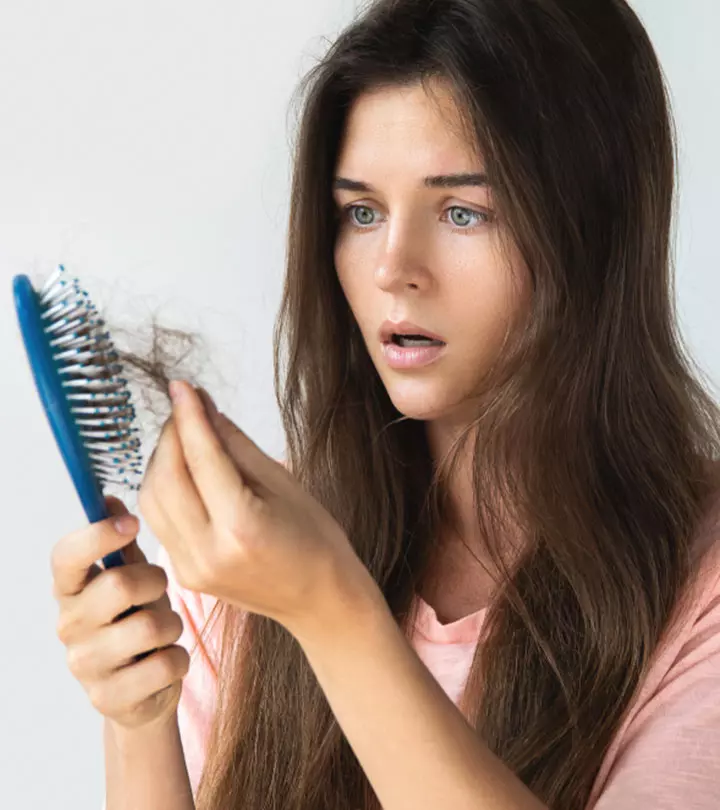
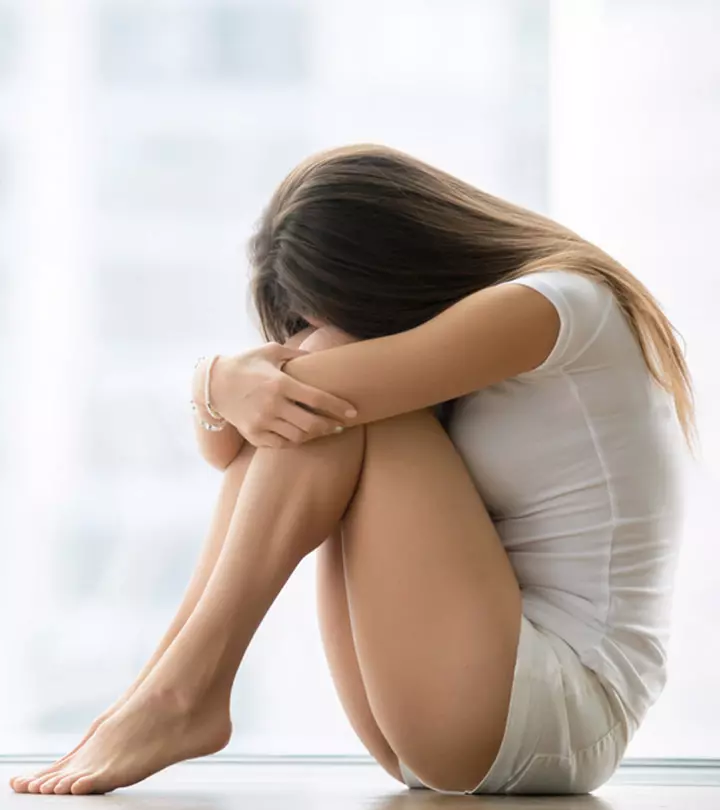





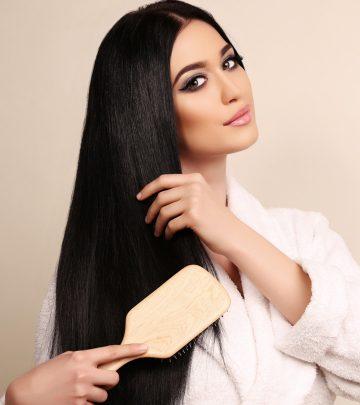




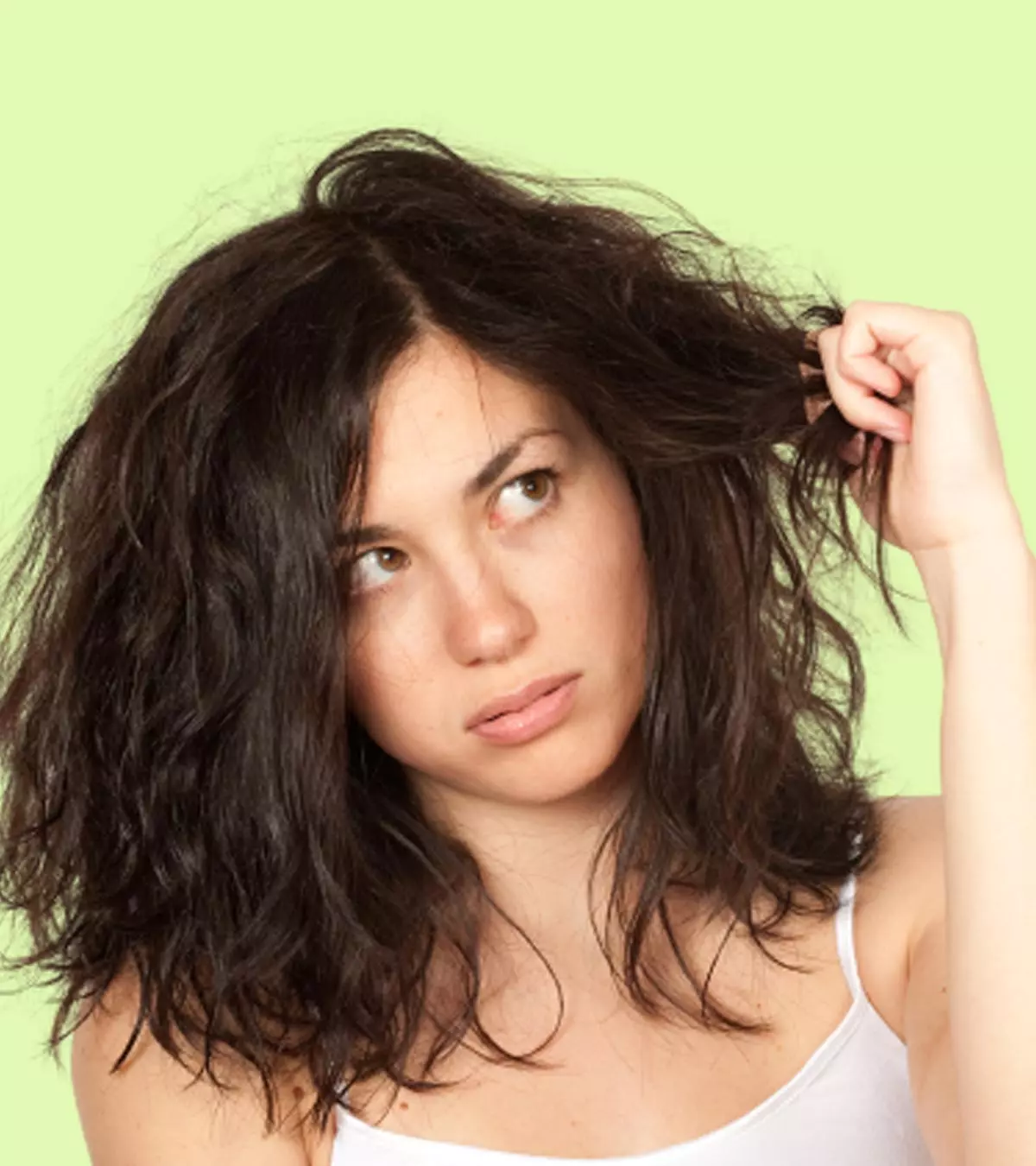


Community Experiences
Join the conversation and become a part of our empowering community! Share your stories, experiences, and insights to connect with other beauty, lifestyle, and health enthusiasts.